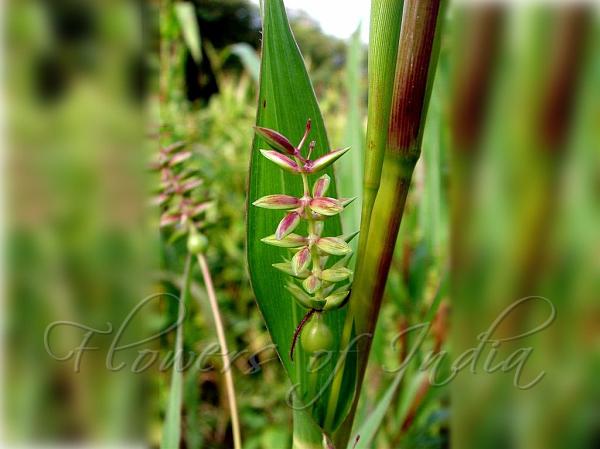|
| Adlay Millet |
|

|

| File size | 91954 |
| Original date | 9/29/07 4:31 PM |
| Resolution | 512 x 768 |
| Flash | Flash did not fire, auto |
| Focal length | 6.0mm |
| Exposure time | 1/160s |
| Aperture | 4.0 |
| Focus Distance | |
| Metering Mode | Multi-segment |
| Camera make | SONY |
| Camera model | DSC-H1 |
| Sensor type |
|
|
|
|
Photo: |
Botanical name: Coix lacryma-jobi Family: Poaceae (Grass family)
Synonyms: Coix arundinacea, Coix lachryma
Synonyms: Coix arundinacea, Coix lachryma
Adlay Millet is a coarse annual herb. The stem is erect, branched, rather
coarse, and stout, and 1-2 m high. Leaves 10-45 x 1-2.5 cm, linear-oblong, heart-shaped at base, margin scaberulous, tapering at tip; sheaths to 6 cm long, hairless; ligules ovate, membranous. Flower-spikes are 6-10 cm long, erect
and peduncled. The male spikelets are about 8 mm long. The capsules
(fruits), enclosing the female flowers and the grains, are hard, bony,
shining white or grey., shining, ovoid, about 8 mm long. The chief value of
Adlay Millet lies in the edibility of the fruit. The berries are also strung
as beads, used as rosaries, made into curtains, trays, bags etc.
Adlay Millet is is native to the Indian Subcontinent to Taiwan and Peninsula Malaysia.
Medicinal uses: The root is used in India for menstrual
disorders. In Liberia the juice from the stem is squeezed into the eye to
relieve irritation due to injury.
The root is used in India for menstrual
disorders. In Liberia the juice from the stem is squeezed into the eye to
relieve irritation due to injury.
Medicinal uses:
 The root is used in India for menstrual
disorders. In Liberia the juice from the stem is squeezed into the eye to
relieve irritation due to injury.
The root is used in India for menstrual
disorders. In Liberia the juice from the stem is squeezed into the eye to
relieve irritation due to injury. | Identification credit: Pravin Kawale | Photographed in Maharashtra. |
• Is this flower misidentified? If yes,